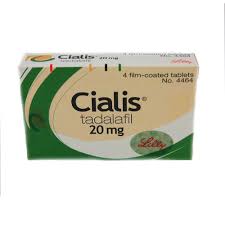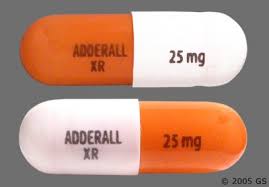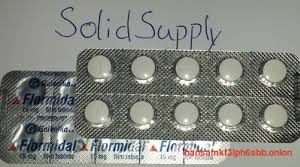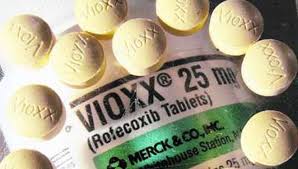USD35.00
Description
Product Description
1. Name of the medicinal product
CIALIS* 2.5 mg, 5 mg, 10 mg and 20 mg film-coated tablets.
2. Qualitative and quantitative composition
Each 2.5 mg tablet contains 2.5 mg tadalafil.
Excipient with known effect: Each coated tablet contains 87 mg of lactose (as monohydrate).
Each 5 mg tablet contains 5 mg tadalafil.
Excipient with known effect: Each coated tablet contains 121 mg of lactose (as monohydrate).
Each 10 mg tablet contains 10 mg tadalafil.
Excipient with known effect: Each coated tablet contains 170 mg of lactose (as monohydrate).
Each 20 mg tablet contains 20 mg tadalafil.
Excipient with known effect: Each coated tablet contains 233 mg of lactose (as monohydrate).
For the full list of excipients, see section 6.1.
3. Pharmaceutical form
Film-coated tablet (tablet).
The 2.5 mg tablets are light orange-yellow and almond shaped tablets, marked ‘C 2 ½’ on one side.
The 5 mg tablets are light yellow and almond shaped tablets, marked ‘C 5’ on one side.
The 10 mg tablets are light yellow and almond shaped tablets, marked ‘C 10’ on one side.
The 20 mg tablets are yellow and almond shaped tablets, marked ‘C 20’ on one side.
4. Clinical particulars
4.1 Therapeutic indications
Treatment of erectile dysfunction in adult males.
In order for tadalafil to be effective for the treatment of erectile dysfunction, sexual stimulation is required.
5 mg only: Treatment of the signs and symptoms of benign prostatic hyperplasia in adult males.
CIALIS is not indicated for use by women.
4.2 Posology and method of administration
Posology
Erectile dysfunction in adult Men
In general, the recommended dose is 10 mg taken prior to anticipated sexual activity and with or without food.
In those patients in whom tadalafil 10 mg does not produce an adequate effect, 20 mg might be tried. It may be taken at least 30 minutes prior to sexual activity.
The maximum dose frequency is once per day.
Tadalafil 10 and 20 mg is intended for use prior to anticipated sexual activity and it is not recommended for continuous daily use.
In patients who anticipate a frequent use of CIALIS (i.e., at least twice weekly) a once daily regimen with the lowest doses of CIALIS might be considered suitable, based on patient choice and the physician’s judgement.
In these patients, the recommended dose is 5mg taken once a day at approximately the same time of day. The dose may be decreased to 2.5mg once a day based on individual tolerability.
The appropriateness of continued use of the daily regimen should be reassessed periodically.
Benign prostatic hyperplasia in adult men (tadalafil 5 mg only)
The recommended dose is 5 mg, taken at approximately the same time every day with or without food. For adult men being treated for both benign prostatic hyperplasia and erectile dysfunction the recommended dose is also 5 mg taken at approximately the same time every day. Patients who are unable to tolerate tadalafil 5 mg for the treatment of benign prostatic hyperplasia should consider an alternative therapy as the efficacy of tadalafil 2.5 mg for the treatment of benign prostatic hyperplasia has not been demonstrated.
Special Populations
Elderly Men
Dose adjustments are not required in elderly patients.
Men with Renal Impairment
Dose adjustments are not required in patients with mild to moderate renal impairment. For patients with severe renal impairment, 10 mg is the maximum recommended dose.
Once-a-day dosing of 2.5 or 5 mg tadalafil both for the treatment of erectile dysfunction or benign prostatic hyperplasia is not recommended in patients with severe renal impairment (see sections 4.4 and 5.2).
Men with Hepatic Impairment
For the treatment of erectile dysfunction using on-demand CIALIS the recommended dose of CIALIS is 10 mg taken prior to anticipated sexual activity and with or without food. There is limited clinical data on the safety of CIALIS in patients with severe hepatic impairment (Child-Pugh class C); if prescribed, a careful individual benefit/risk evaluation should be undertaken by the prescribing physician. There are no available data about the administration of doses higher than 10mg of tadalafil to patients with hepatic impairment.
Once-a-day dosing both for the treatment of erectile dysfunction and benign prostatic hyperplasia has not been evaluated in patients with hepatic impairment; therefore, if prescribed, a careful individual benefit/risk evaluation should be undertaken by the prescribing physician (see sections 4.4 and 5.2).
Men with Diabetes
Dose adjustments are not required in diabetic patients.
Paediatric population
There is no relevant use of CIALIS in the paediatric population with regard to the treatment of erectile dysfunction.
Method of administration
CIALIS is available as 2.5, 5, 10, and 20 mg film-coated tablets for oral use.
4.3 Contraindications
Hypersensitivity to the active substance or to any of the excipients listed in section 6.1.
In clinical studies, tadalafil was shown to augment the hypotensive effects of nitrates. This is thought to result from the combined effects of nitrates and tadalafil on the nitric oxide/cGMP pathway. Therefore, administration of CIALIS to patients who are using any form of organic nitrate is contraindicated (see section 4.5).
CIALIS must not be used in men with cardiac disease for whom sexual activity is inadvisable. Physicians should consider the potential cardiac risk of sexual activity in patients with pre-existing cardiovascular disease.
The following groups of patients with cardiovascular disease were not included in clinical trials and the use of tadalafil is therefore contraindicated:
– patients with myocardial infarction within the last 90 days,
– patients with unstable angina or angina occurring during sexual intercourse,
– patients with New York Heart Association Class 2 or greater heart failure in the last 6 months,
– patients with uncontrolled arrhythmias, hypotension (<90/50 mm Hg), or uncontrolled hypertension, – patients with a stroke within the last 6 months. CIALIS is contraindicated in patients who have loss of vision in one eye because of non-arteritic anterior ischaemic optic neuropathy (NAION), regardless of whether this episode was in connection or not with previous PDE5 inhibitor exposure (see section 4.4). The co-administration of PDE5 inhibitors, including tadalafil, with guanylate cyclase stimulators, such as riociguat, is contraindicated as it may potentially lead to symptomatic hypotension (see section 4.5). 4.4 Special warnings and precautions for use Before treatment with CIALIS A medical history and physical examination should be undertaken to diagnose erectile dysfunction or benign prostatic hyperplasia and determine potential underlying causes, before pharmacological treatment is considered. Prior to initiating any treatment for erectile dysfunction, physicians should consider the cardiovascular status of their patients, since there is a degree of cardiac risk associated with sexual activity. Tadalafil has vasodilator properties, resulting in mild and transient decreases in blood pressure (see section 5.1) and as such potentiates the hypotensive effect of nitrates (see section 4.3). The evaluation of erectile dysfunction should include a determination of potential underlying causes and the identification of appropriate treatment following an appropriate medical assessment. It is not known if CIALIS is effective in patients who have undergone pelvic surgery or radical non-nerve-sparing prostatectomy. Tadalafil 5 mg – Prior to initiating treatment with tadalafil for benign prostatic hyperplasia patients should be examined to rule out the presence of carcinoma of the prostate and carefully assessed for cardiovascular conditions (see section 4.3). Cardiovascular Serious cardiovascular events, including myocardial infarction, sudden cardiac death, unstable angina pectoris, ventricular arrhythmia, stroke, transient ischaemic attacks, chest pain, palpitations and tachycardia, have been reported either post marketing and/or in clinical trials. Most of the patients in whom these events have been reported had pre-existing cardiovascular risk factors. However, it is not possible to definitively determine whether these events are related directly to these risk factors, to CIALIS, to sexual activity, or to a combination of these or other factors. Tadalafil 2.5 mg and 5 mg – In patients receiving concomitant antihypertensive medicinal products, tadalafil may induce a blood pressure decrease. When initiating daily treatment with tadalafil, appropriate clinical considerations should be given to a possible dose adjustment of the antihypertensive therapy. In patients who are taking alpha1 blockers, concomitant administration of CIALIS may lead to symptomatic hypotension in some patients (see section 4.5). The combination of tadalafil and doxazosin is not recommended. Vision Visual defects and cases of NAION have been reported in connection with the intake of CIALIS and other PDE5 inhibitors. The patient should be advised that in case of sudden visual defect, he should stop taking CIALIS and consult a physician immediately (see section 4.3). Renal and hepatic impairment (tadalafil 2.5 mg and 5 mg) Due to increased tadalafil exposure (AUC), limited clinical experience and the lack of ability to influence clearance by dialysis, once-a-day dosing of CIALIS is not recommended in patients with severe renal impairment. There is limited clinical data on the safety of single-dose administration of CIALIS in patients with severe hepatic insufficiency (Child-Pugh Class C). Once-a-day administration has not been evaluated in patients with hepatic insufficiency. If CIALIS is prescribed, a careful individual benefit/risk evaluation should be undertaken by the prescribing physician. Hepatic impairment (tadalafil 10 mg and 20 mg) There is limited clinical data on the safety of single-dose administration of CIALIS in patients with severe hepatic insufficiency (Child-Pugh Class C). If CIALIS is prescribed, a careful individual benefit/risk evaluation should be undertaken by the prescribing physician. Priapism and anatomical deformation of the penis Patients who experience erections lasting 4 hours or more should be instructed to seek immediate medical assistance. If priapism is not treated immediately, penile tissue damage and permanent loss of potency may result. CIALIS, should be used with caution in patients with anatomical deformation of the penis (such as angulation, cavernosal fibrosis, or Peyronie’s disease) or in patients who have conditions which may predispose them to priapism (such as sickle cell anaemia, multiple myeloma or leukaemia). Use with CYP3A4 inhibitors Caution should be exercised when prescribing CIALIS to patients using potent CYP3A4 inhibitors (ritonavir, saquinavir, ketoconazole, itraconazole, and erythromycin), as increased tadalafil exposure (AUC) has been observed if the medicinal products are combined (see section 4.5). CIALIS and other treatments for erectile dysfunction The safety and efficacy of combinations of CIALIS and other PDE5 inhibitors or other treatments for erectile dysfunction have not been studied. The patients should be informed not to take CIALIS in such combinations. Lactose CIALIS contains lactose. Patients with rare hereditary problems of galactose intolerance, the Lapp lactase deficiency or glucose-galactose malabsorption should not take this medicinal product. 4.5 Interaction with other medicinal products and other forms of interaction Interaction studies were conducted with 10 mg and/or 20 mg tadalafil, as indicated below. With regard to those interaction studies where only the 10 mg tadalafil dose was used, clinically relevant interactions at higher doses cannot be completely ruled out. Effects of Other Substances on Tadalafil Cytochrome P450 inhibitors Tadalafil is principally metabolised by CYP3A4. A selective inhibitor of CYP3A4, ketoconazole (200 mg daily), increased tadalafil (10 mg) exposure (AUC) 2-fold and Cmax by 15%, relative to the AUC and Cmax values for tadalafil alone. Ketoconazole (400 mg daily) increased tadalafil (20 mg) exposure (AUC) 4-fold and Cmax by 22%. Ritonavir, a protease inhibitor (200 mg twice daily), which is an inhibitor of CYP3A4, CYP2C9, CYP2C19, and CYP2D6, increased tadalafil (20 mg) exposure (AUC) 2-fold with no change in Cmax. Although specific interactions have not been studied, other protease inhibitors, such as saquinavir, and other CYP3A4 inhibitors, such as erythromycin, clarithromycin, itraconazole, and grapefruit juice, should be co-administered with caution, as they would be expected to increase plasma concentrations of tadalafil (see section 4.4). Consequently, the incidence of the adverse reactions listed in section 4.8 might be increased. Transporters The role of transporters (for example, p-glycoprotein) in the disposition of tadalafil is not known. Therefore, there is the potential of drug interactions mediated by inhibition of transporters.




